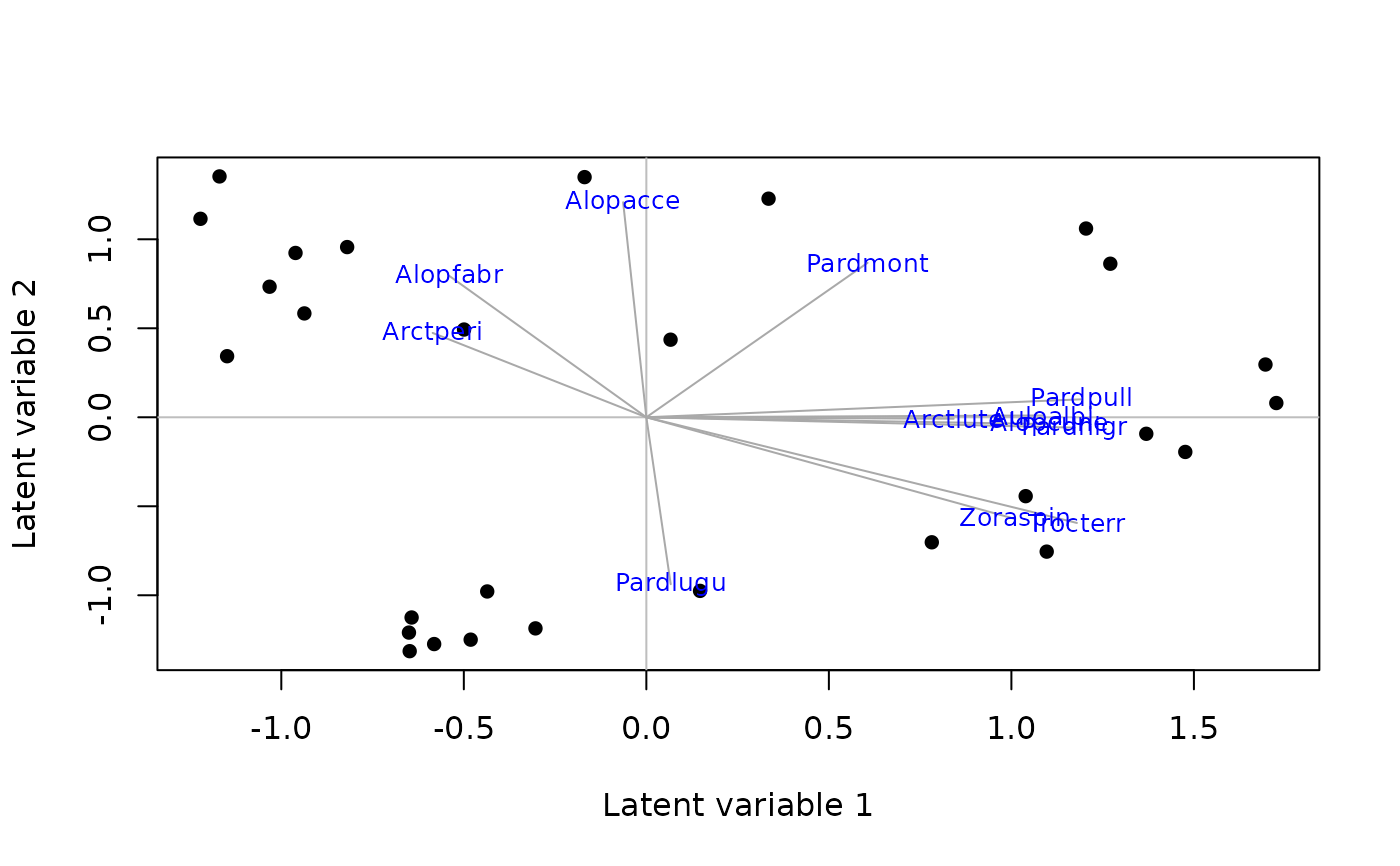Model based ordination with Gaussian copulas
cord.RdModel based ordination with Gaussian copulas
Arguments
- obj
object of either class
manyglm, ormanyanywith ordinal modelsclm- nlv
number of latent variables (default = 2, for plotting on a scatterplot)
- n.samp
integer (default = 500), number of sets residuals used for importance sampling (optional, see detail)
- seed
integer (default = NULL), seed for random number generation (optional)
Value
loadings latent factor loadings
scores latent factor scores
sigma covariance matrix estimated with nlv latent variables
theta precision matrix estimated with nlv latent variables
BIC BIC of estimated model
logL log-likelihood of estimated model
Details
cord is used to fit a Gaussian copula factor analytic model to multivariate discrete data, such as co-occurrence (multi species) data in ecology. The model is estimated using importance sampling with n.samp sets of randomised quantile or "Dunn-Smyth" residuals (Dunn & Smyth 1996), and the factanal function. The seed is controlled so that models with the same data and different predictors can be compared.
References
Dunn, P.K., & Smyth, G.K. (1996). Randomized quantile residuals. Journal of Computational and Graphical Statistics 5, 236-244.
Popovic, G. C., Hui, F. K., & Warton, D. I. (2018). A general algorithm for covariance modeling of discrete data. Journal of Multivariate Analysis, 165, 86-100.
Examples
abund <- spider$abund
spider_mod <- stackedsdm(abund,~1, data = spider$x, ncores=2)
spid_lv=cord(spider_mod)
plot(spid_lv,biplot = TRUE)
